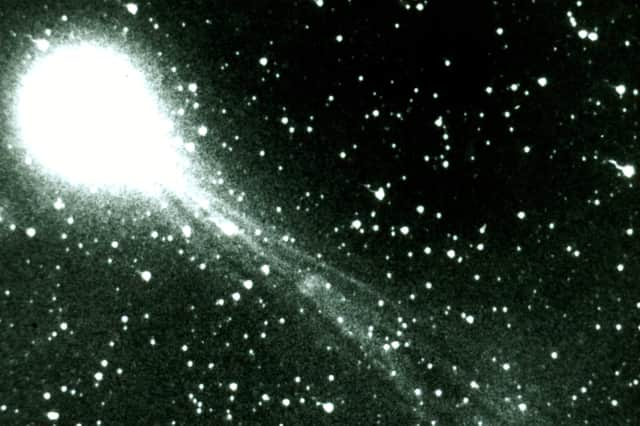Halley's Comet: this weekend marks famed comet's aphelion - when was it first discovered?


Halley's Comet, also known as Halley, is reaching a hallmark point of its 75-79 year journey through the solar system as it reaches its aphelion - its most distant point - from the Sun on 9 December.
The comet, known also as 1P/Halley, has not been seen since the European Southern Observatory's Very Large Telescope imaged it a generation ago in 2003, but December 2023 is roughly the midpoint between the last 1986 and the next 2061 apparition for the comet.
Advertisement
Hide AdAdvertisement
Hide AdThe exact moment of aphelion occurs at 1:00 Universal Time (UT) on December 9th, (8:00 PM EST on Friday night on the 8th). At that point, Halley's Comet will be 35.14 AU (almost 3.3 billion miles or 5.3 billion kilometres) from the Sun, where it's beyond Neptune's orbit in the southern constellation of Hydra the Sea Serpent moving at 0.91 kilometres per second or 2,000 miles per hour respectively to the Sun. Unfortunately, this means it's out of range for telescopes.
What is Halley's Comet?
Halley is the only known short-period comet regularly visible to the naked eye from Earth, and the only naked-eye comet that can appear twice in a human lifetime.
It last appeared in the inner parts of the Solar System in 1986 and will next appear in mid-2061. Its returns have been recorded since 240 BC, but it was only in 1705 that it was discovered that these appearances were re-appearances of the same comet - a finding by Edmond Halley who the comet is named after.
In 1986, Halley's Comet became the first comet to be observed in detail by spacecraft, providing the first observational data on the structure of a comet nucleus and the mechanism of coma and tail formation.
Comment Guidelines
National World encourages reader discussion on our stories. User feedback, insights and back-and-forth exchanges add a rich layer of context to reporting. Please review our Community Guidelines before commenting.
